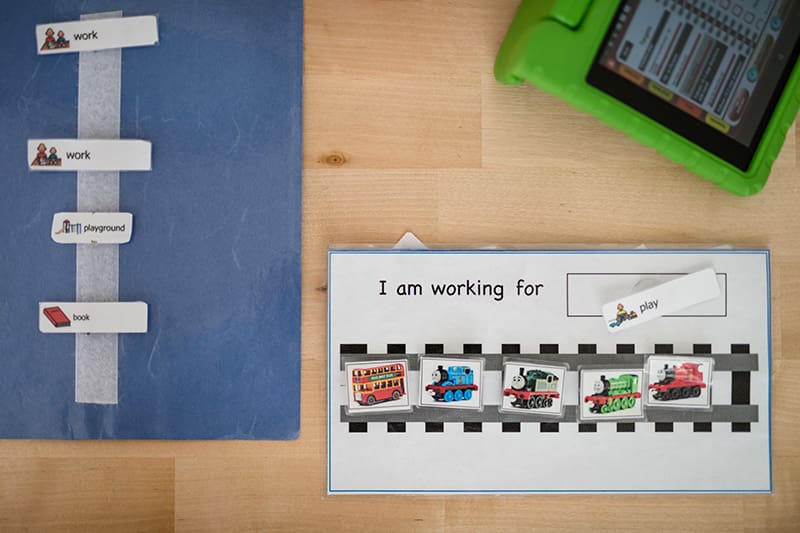Autism Spectrum Disorder (ASD) presents unique challenges that can affect various aspects of an individual’s life, including communication, social interactions, and behavior. Applied Behavior Analysis (ABA) therapy is a well-established method to support individuals with autism by promoting positive behaviors and reducing negative ones. One effective tool in ABA therapy is the use of visual calendars. Visual calendars can play a significant role in helping individuals with autism by providing structure, predictability, and a sense of control over their daily activities. This article explores the benefits of visual calendars in ABA therapy and offers practical tips for their implementation.
The Importance of Structure and Predictability in Autism
Individuals with autism often thrive on routine and predictability. Sudden changes or unexpected events can lead to anxiety and behavioral challenges. Visual calendars offer a way to create a predictable environment, which can significantly reduce stress and anxiety for individuals with autism. By visually representing the day’s activities, visual calendars help individuals understand what to expect, thereby providing a sense of security and stability.
How Visual Calendars Work in ABA Therapy
Visual Representation
Visual calendars use pictures, symbols, and words to represent different activities and tasks throughout the day. This visual representation is crucial because many individuals with autism are visual learners. Seeing the sequence of events helps them process and understand the flow of the day more effectively than verbal instructions alone.
Promoting Independence
One of the primary goals of ABA therapy is to promote independence in individuals with autism. Visual calendars support this goal by enabling individuals to follow their daily schedule independently. By consulting their visual calendar, they can transition between activities without constant prompts from caregivers or therapists, fostering a sense of autonomy and self-reliance.
Reducing Anxiety
Anxiety is a common challenge for individuals with autism, often triggered by uncertainty or changes in routine. Visual calendars help alleviate this anxiety by providing a clear and predictable outline of the day’s events. When individuals know what to expect, they are better able to manage their anxiety and focus on engaging in positive behaviors.
Enhancing Communication
Communication difficulties are a hallmark of autism. Visual calendars serve as a bridge to better communication by providing a non-verbal means of conveying information about daily activities. For non-verbal individuals or those with limited verbal skills, visual calendars can be an invaluable tool for understanding and expressing their daily routine.
Types of Visual Calendars
Daily Visual Schedules
Daily visual schedules break down the day into specific activities and tasks. Each activity is represented by a picture or symbol, and the schedule is typically displayed in a prominent location where the individual can easily see it. This type of visual calendar is ideal for providing a clear, step-by-step outline of the day’s events.
Weekly Visual Calendars
Weekly visual calendars offer a broader overview of the week, helping individuals understand the sequence of days and the activities planned for each day. This type of calendar is useful for individuals who can comprehend and benefit from a longer-term view of their schedule.
Portable Visual Calendars
Portable visual calendars are small, often hand-held, versions of daily or weekly schedules. These can be taken on the go, allowing individuals to have their schedule with them at all times. Portable visual calendars are particularly useful for outings or activities outside the home, providing continuity and consistency in different environments.
Creating an Effective Visual Calendar
Choose Appropriate Visuals
When creating a visual calendar, it’s essential to choose visuals that are meaningful and easily recognizable for the individual. This might include photographs, clipart, symbols, or even hand-drawn pictures. The key is to use visuals that the individual can easily associate with specific activities.
Consistency is Key
Consistency in using visual calendars is crucial for their effectiveness. The calendar should be updated regularly and consistently reflect the individual’s daily routine. Any changes or updates should be communicated clearly to the individual to avoid confusion and anxiety.
Involve the Individual
Involving the individual in the creation and maintenance of their visual calendar can enhance their engagement and sense of ownership. This involvement might include selecting the visuals, helping to arrange the schedule, or even physically placing the visuals on the calendar. Active participation can also serve as a learning opportunity, reinforcing the individual’s understanding of their routine.
Flexibility and Adaptability
While consistency is important, it’s also essential to maintain a degree of flexibility. There will be times when changes are unavoidable, and it’s important to prepare the individual for these changes. Using visual cues to indicate changes or transitions can help individuals adapt more smoothly.
Practical Tips for Implementing Visual Calendars
- Start Simple: Begin with a basic schedule that includes key activities and gradually add more details as the individual becomes familiar with the concept.
- Use Clear and Simple Visuals: Ensure that the visuals used are straightforward and easily understandable for the individual.
- Regularly Update the Calendar: Keep the calendar current and make sure it accurately reflects the daily or weekly schedule.
- Introduce Changes Gradually: If changes to the schedule are necessary, introduce them gradually and use visual cues to prepare the individual.
- Combine with Verbal Instructions: While visual calendars are powerful tools, combining them with verbal instructions can enhance understanding and reinforce the schedule.
- Use Positive Reinforcement: Praise and reward the individual for following the schedule and transitioning between activities independently.
Visual calendars are a valuable tool in ABA therapy, offering numerous benefits for individuals with autism. By providing structure, predictability, and a clear visual representation of daily activities, visual calendars can reduce anxiety, promote independence, and enhance communication. Implementing visual calendars effectively requires careful consideration of the individual’s needs, consistent use, and a balance of flexibility and stability. For therapists and caregivers, visual calendars can be a game-changer in creating a supportive and structured environment that fosters positive behavior and overall well-being.
For more information on how visual calendars and ABA therapy can benefit individuals with autism, contact Chicago ABA Therapy. Our team of experts is dedicated to providing personalized support and effective interventions to help individuals with autism thrive.










